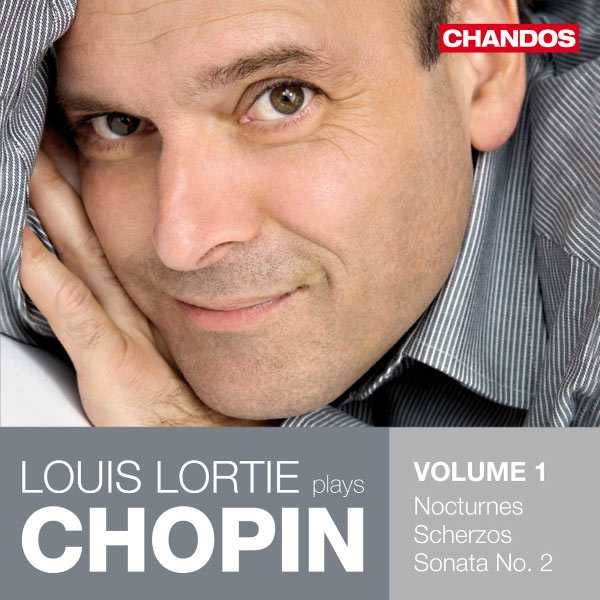

Composer: Frédéric François Chopin
Performer: Louis Lortie
Format: FLAC (tracks)
Label: Chandos
Catalogue: CHAN10588
Release: 2010
Size: 1.25 GB
Recovery: +3%
Scan: yes
01. Nocturne No. 19 in E minor, Op. 72 No. 1
02. Scherzo No. 1 in B minor, Op. 20
03. Two Nocturnes, Op. 55: II. Nocturne in E-Flat Major
04. Scherzo No. 2 in B flat minor, Op. 31
05. Two Nocturnes, Op. 62: II. Nocturne in E Major
06. Scherzo No. 3 in C sharp minor, Op. 39
07. Two Nocturnes, Op. 62: I. Nocturne in B Major
08. Scherzo No. 4 in E major, Op. 54
Piano Sonata No. 2 in B-Flat Minor, Op. 35, “Marche Funèbre”
09. I. Grave
10. II. Scherzo
11. III. Marche funèbre. Lento
12. IV. Presto
This first volume of Chandos’ series of the piano music of Frédéric Chopin offers an interesting arrangement of works, pairing selected Nocturnes with each of the four Scherzos, which are then followed by the Sonata No. 2 in B flat minor as a closer. At first blush, pianist Louis Lortie appears to have chosen the pieces primarily for their obvious key relationships — E minor, B minor; E flat major, B flat minor; E major, C sharp minor; B major, E major — yet as transparent as these correspondences may be to a theoretician, and as pleasing to the ear as they undoubtedly are, the match-ups actually have more to do with the substance of the music. Each of the Scherzos is passionate, expansive, and intense in expression, so placing shorter Nocturnes of contrasting character before them, rather like preludes, necessitates some kind of organizational logic. Lortie has wisely chosen pieces that complement each other in content and expressions, but he has also created a broader grouping that has a natural tonal arc, beginning and ending on E. Theoretically, then, the Sonata No. 2 in B flat minor should stand apart from the first part of the program, because its key is as far removed from E as possible. Yet the contrasting moods and keys that are established in the Nocturnes and Scherzos prepare the ear for similar contrasts in the sonata. Lortie’s Chopin is by turns reflective and flamboyant, dark and dazzling, and this emotional balance is underscored throughout the recital by the alternation of moods, which Lortie carefully establishes from the beginning. Chandos’ sound is clear and vibrant, and the 24-bit/96 kHz recording gives the music an almost palpable presence.



